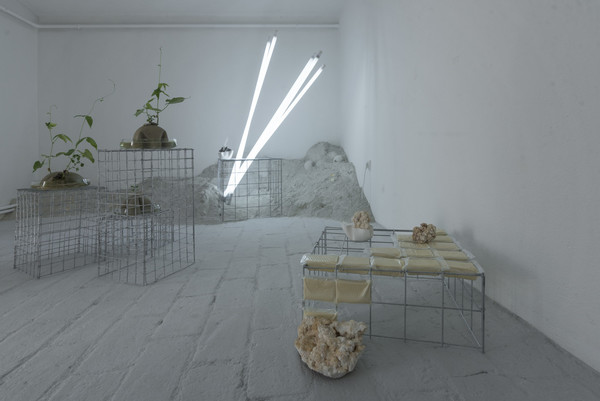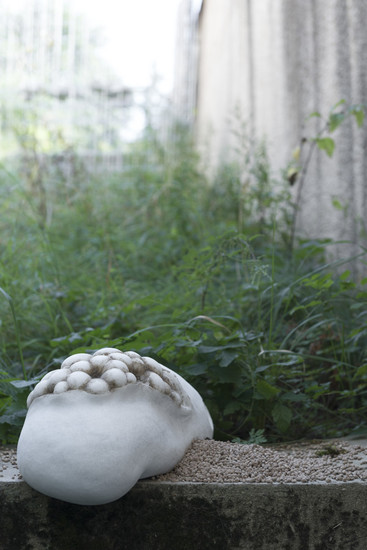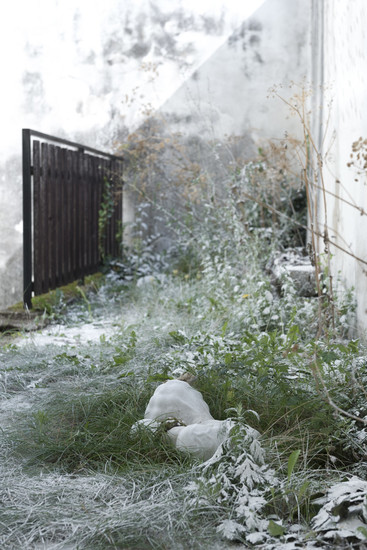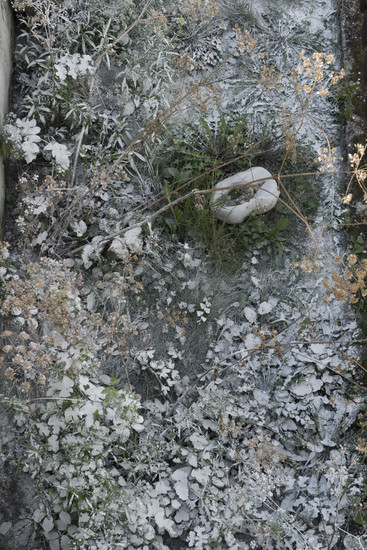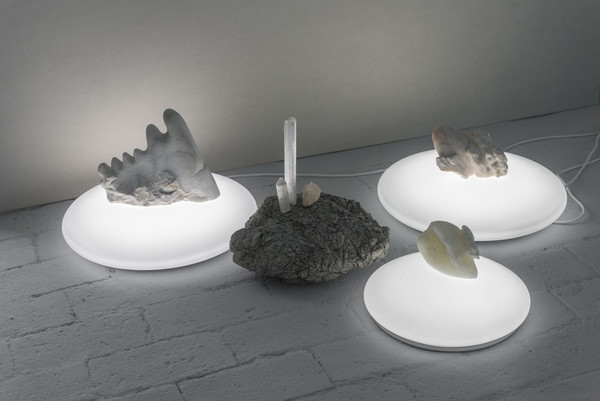The exhibition is an outcome of the authors' residency in The Schaubmar Mill in Pezinok within the exhibition project Into the Wild curated by Alexandra Tamasova. The residency was organized by the Slovak National Gallery and the works in the exhibition were materialized with financial support from the Slovak Arts Council.
Cosy Cosmos Cosmetics - a visual biography of calcium
"Soon after [life appeared on Earth] comes the first domestication of minerals, the few ounces of limestone or silica needed by an undecided and threatened substance in order to build itself protection or support: on the outside, shells and carapaces, and on the inside, vertebrae that are immediately articulated, adapted, and finished down to the last detail. The minerals have changed their employ, been drawn from their torpor, been adapted to and secreted by life, and so afflicted with the curse of growth - only for a brief spell, it is true. The unstable gist of sentience is always moving from place to place. An obstinate alchemy, making use of immutable models, untiringly prepares for an ever-new flesh another refuge or support. Every abandoned shelter, every porous structure combines new form, through the centuries and the centuries of centuries, a slow rain of sterile seeds. They settle down, one stratum upon another, into a mud composed almost entirely of themselves, a mud that hardens and becomes stone again. Now, even though their shape may still occasionally be recognized in the cement where they are embedded, that shape is no more than a cipher, a sign denoting the transient passage of a species."
This is a fragment from Roger Caillois L'écriture des pierres (1970), translated as The Writing of Stones (1985), a simultaneously scholarly and poetical meditation, contemplating the interior of minerals. It tells the story of sedimentary rocks harking back to a geological era well before mankind's unrefined ancestor walked the Earth. It alludes to the process of abiogenesis by which life has arisen from non-living matter, such as simple organic compounds and metallome elements. It refers to minerals like marble and gypsum, which were already speaking volumes about their conflicts, alliances and aspirations hundreds of millions of years ago.
Gypsum and marble are both calcium based sediments (CaSo4 and CaCo3), formed as a consequence of countless unknown forces, too unpredictable to be measured, that shape many living and non living bodies from within and from outside.
Everything that contains calcium today flourished in the Jurassic period. Thus, marble and gypsum were once vital and fully expanded lifeforms which ultimately perished, becoming compacted and compressed. There is an enormous quantity of death these rocks have absorbed in the millennia of their formation. Between these two well known and vastly used minerals lies the path of diagonal autopsy performed within the frame of what we call Cosy Cosmos Cosmetics. How do minerals like gypsum and marble relate to the evolution of large-scale structures in nature? How can we trace and depict a biography of these sedimentary rocks? How can we narrate these raw geological materials, both before and after they were infected by human interaction?
The word cosmetics (which we all know as a noun denoting the art of beautifying the body) derives from the Greek "kosmos", meaning amongst others "order", "arrangement", "ornament" or "adornment". The search for order and beauty in the molecular cosmos of calcium compounds intersects with the physicality and material properties of marble, plaster, lime, cement and other calcite based formations. Our cosy cosmos is a romance based on a material ontology and a material consciousness that underline the poetic, creative moment of these minerals, their ability to transform both themselves and us.
The cosy calcium cosmos romance is an approved entanglement of scientific knowledge with aesthetic deviances. Science explains that calcium is a metal (actually it is the most abundant and vital metal in animals, including humans). It also shows that calcium is leaves, bones, teeth, shells, kidney stones, rocks, soil… Calcium is a vital organ of the Earth crust. It is core matter to raw matter. It is ubiquitous and in constant cycle. A telluric pulse, a vehicle for life, dead and alive, dissolved and coagulated. Science also tells us that calcium is a primordial nuclide that exists between us and other galaxies. It is an interstellar substance, one of the main rock forming elements that was present in cosmos long before our solar system was formed. Calcium is steel and concrete, architecture and agriculture; it is disease and it is cure, it is poison and antidote. Calcium is a fossil of eternal warfare, a trace of existence, it is last and lost transmission. Our instinct guides us to feel calcium as a hidden element of energyand a dormant deposit of growing, a lead under the surface and over the edge, the state of crystalized past and future, order and chaos, beauty and cosmetics. Our lust for calcium feeds our libido of lithosphere, hydrosphere and biosphere exploitation. Calcium is love, politics, economy and ecology. Then we see calcium hacked by lime, plaster, pigments, marble and transmuted into art. Sometimes it is digested into soft matter that remembers shapes (plaster, cement), or it is petrified into brittle condensation which withstand contouring (marble, limestone, alabaster…). Often it disintegrates into exaggerated extensions (pigments, stabilizers, fertilizers, preservatives, coagulants, supplements). Calcium feels either like indifferent matter or like a promising zygote. It tests out the logic of an ethics of being in which the living-non-living or human-non-human binaries might no longer apply. It can be absolute existence, absolute motion, absolute syntax, absolute cosmos, inorganic and organic, stone and flesh, blood and water. It oscillates between ancient geology and new technology. Calcium seems out of time, out of place, out if this world, out of shape, out of shell, out of mind.
